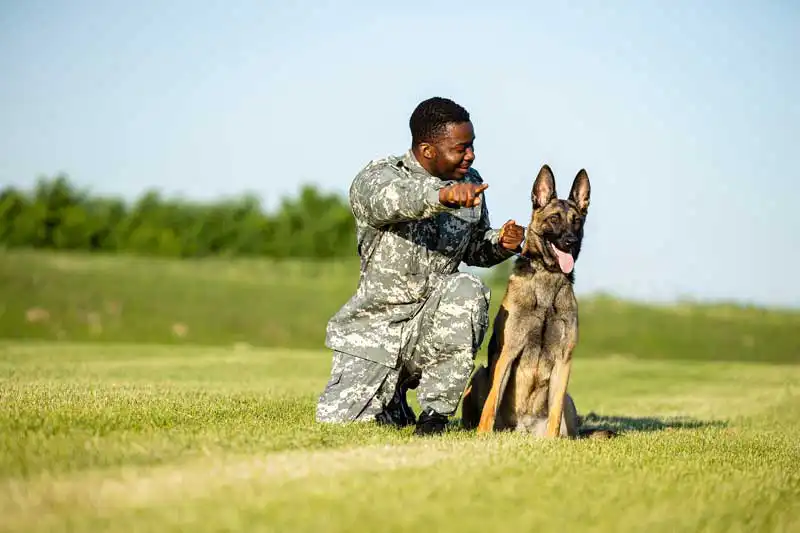17 Jun 2025
Can dogs help with teenage anxiety?
Alex Gough MA, VetMB, PhD, CertSAM, CertVC, MRCVS shares his latest research review of studies including canine assistance with stress and loneliness, vegan diets for dogs and how cranberry could help cats with urine issues.

Image: sjhuls / Adobe Stock
Stress is a common part of childhood and adolescence, and much attention is being paid currently to the mental health of young people – especially since COVID-19.
The use of dogs to help regulate stress in various age groups has been suggested. Peña-Jorquera et al1 performed a systematic review and meta-analysis to assess the literature regarding the impact of canine-assisted interventions on the cortisol levels of young people. Forty-four studies were found eligible to be included in the review.
A significant reduction in cortisol was reported for interventions that lasted for at least 15 minutes, but not for shorter interventions.
The authors concluded that longer dog-assisted interventions show some promise for helping to regulate the cortisol levels of young people experiencing stress.
As well as being potentially helpful in reducing stress, it has been suggested that dogs may also be able to help with loneliness. Loneliness has been identified as an important threat to health, possibly even more dangerous than obesity. It has been reported that up to 29% of older adults who do not live in institutions suffer from loneliness. It is worse for patients receiving inpatient rehabilitation and those who are physically inactive and socially isolated. Trained therapy dogs may reduce loneliness and bring other benefits.
Gee et al2 performed a pilot, randomised controlled trial that randomly assigned 42 older medical in-patients to receive either dog and handler interaction, handler-only interaction or usual care. Validated loneliness scales were used to assess the extent of loneliness.
A significant difference was reported in loneliness between the animal-assisted group and usual care, but not between the handler-only group compared to usual care.
The authors concluded that dog-assisted interaction with hospitalised patients reduced loneliness, but human handler visits did not. This suggests that something unique and beneficial exists in the dog-human interaction.
Escherichia coli in cats
Escherichia coli is a common pathogen of the urinary tract in humans, dogs and cats. It has been shown that cranberry intake can reduce the adhesion of uropathogenic E coli (UPEC) to human and canine urinary epithelial cells, but this has not yet been demonstrated in cats.
Carvajal-Campos et al3 performed a blind, randomised cross-over trial involving six neutered cats, five females and one male. Three diets were fed for two weeks in random order, one containing 0.1% cranberry powder, one containing 0.3% cranberry powder and one containing no cranberry.
Naturally voided urine was collected on the last two days of each period and cultured for bacteria. Adherence to feline uroepithelial cells of the cultured bacteria was assessed. A total of 60% of the cats receiving 0.1% cranberry powder and 100% of the cats receiving 0.3% cranberry powder had significant reduction in adherence to the uroepithelial cells compared to the same animals when they were eating the control diet.
The authors concluded that supplementing a diet with cranberry may help prevent adhesion of UPEC to uroepithelial cells in cats.
Appendicular osteosarcoma
Appendicular osteosarcoma is an aggressive neoplasm in dogs with a relatively poor prognosis. It has been previously shown that adjuvant chemotherapy is helpful in the treatment of appendicular osteosarcoma in large-breed dogs, but it is uncertain if the same applies in small breed dogs. Zanardi et al4 performed a retrospective study to investigate the outcomes in dogs less than 15kg weight that underwent curative surgery for appendicular osteosarcoma with or without postoperative adjuvant chemotherapy.
Forty-three dogs were included in the study, 17 of which underwent surgery alone and 26 of which also had adjuvant chemotherapy. The median time to distant progression (TTDP) was 265 days overall, and no significant difference was reported between those treated with and without chemotherapy. The median overall survival was 270 days, but those that had adjuvant chemotherapy had a median survival of 353 days, which was significantly different from those that received amputation only (150 days).
The authors noted that adjuvant chemotherapy may prolong survival, but given the similar TTDP, an alternative explanation is that owners who elect for their dogs to have chemotherapy are less likely to euthanise their dogs early than those who elect not to have chemotherapy. The authors recommended, therefore, that randomised studies are performed to assess whether chemotherapy is genuinely helpful in these cases.
Vegan food for dogs
Vegan diets are becoming increasingly popular for dogs, but further information on their metabolic effects would be helpful. Liversidge et al5 performed a randomised, double-blinded, longitudinal study to assess impact of a vegan diet on the faecal metabolome of dogs, which could give useful information about the dog’s gastrointestinal and overall health.
Sixty-one healthy adult dogs were included in the study and were randomised to be fed either a commercial, extruded animal-based diet (meat diet) or an extruded vegan diet (plant diet) for 12 weeks, after a 4-week acclimation period in which all dogs were fed the meat diet. Faeces were collected for analysis after the 4-week acclimation and after the 12-week experimental period.
At baseline, only 2 out of 66 metabolites differed between the groups, with the same number over the experimental period for the meat diet. By contrast, the dogs fed the vegan diet had a difference in concentration of 46 out of 66 metabolites over the 12-week feeding period –particularly those related to carbohydrate fermentation and sugar metabolism.
The authors noted that feeding a vegan diet can have a significant effect on the faecal metabolic profile compared to a meat diet, even if both diets are processed similarly and contain similar nutrients.
Chondroitinase injections in small dogs
Small dogs with acute-onset, non-ambulatory paraparesis or paraplegia due to intervertebral disc herniation are often recommended to undergo decompressive surgery. However, this is expensive and carries significant risks.
Freeman et al6 performed a phase one clinical trial to assess whether injection of chondroitinase into the discs of affected dogs was a safe and effective alternative to surgery. Included dogs were less than 15kg and the owners were unable to afford decompressive surgery.
Chondroitinase was injected into the disc at the location of the lesion and at four consecutive discs. Success was defined as being able to walk 50 steps unaided after four months.
Fifty-four dogs were included in the study, 4 of which were lost to follow up; 38 out of 40 dogs that had intact pain sensation in the hindlimbs recovered with a median time of 11 days post-injection; 4 out of 10 dogs without pain sensation recovered. No adverse effects of the injection were noted.
The authors concluded that in dogs with intact hindlimb pain perception, chondroitinase injection was as effective as decompressive surgery in the proportion of dogs recovering and time to recovery.
However, for those without intact hindlimb pain perception, the efficacy is less certain due to the small numbers of dogs included in the study.
Nevertheless, this non-surgical treatment shows promise for the treatment of disc-associated paresis and paraplegia.
Military dogs
Military working dogs (MWDs) can sustain severe injuries and loss of life in combat just like their human counterparts. First aid in these situations can be lifesaving.
Palmer et al7 performed a cross-over randomised trial to assess the feasibility of performing a surgical cricothyrotomy (CTT) instead of a tube tracheostomy (TT) to access the airway in an emergency in MWDs.
Five emergency medicine physician residents (MD group) who were trained in performing CTT in people, but not dogs, and five early career vets (DVM group) who had been trained to perform TT but not CTT in dogs, all performed a CTT and TT on 10 canine cadavers.
For the MD group, the time to complete the CTT was statistically shorter than the time to complete the TT. For the DVM group, the time to complete the TT was shorter than the time to complete the CTT, though this was not statistically significant. A positive response was reported by all participants for the CTT compared to the TT.
The authors concluded that CTT could be a useful first-line emergency technique to establish surgical airway access when used by vets and human medics with limited or no experience of performing TT.
- Article appeared in Vet Times (2025), Volume 55, Issue 24, Pages 12-14.

References
- 1. Peña-Jorquera H, Hernández-Jaña S, Sanchez-Martinez J et al (2025). Dog companionship and cortisol levels in youth, a systematic review and meta-analysis, Social Science and Medicine 369: 117815.
- 2. Gee NR, Townsend L, Friedmann E et al (2024). A pilot randomized controlled trial to examine the impact of a therapy dog intervention on loneliness in hospitalized older adults, Innovation in Aging 8(11): igae085.
- 3. Carvajal-Campos A, Trebossen L, Jeusette I et al (2024). The effect of consumption of cranberry (Vaccinium macrocarpon) on Escherichia coli adherence to feline uroepithelial cells in a blind randomised cross-over trial in cats, Journal of Veterinary Research 68(4): 583-587.
- 4. Zanardi S, Sabattini S, Rossi F et al (2025). Adjuvant chemotherapy is associated with prolonged survival time in small-breed dogs undergoing amputation for appendicular osteosarcoma, Veterinary and Comparative Oncology 23(2): 161-167.
- 5. Liversidge BD, Dodd SAS, Adolphe JL et al (2025). The fecal metabolomic signature of a plant-based (vegan) diet compared to an animal-based diet in healthy adult client-owned dogs, Journal of Animal Science 103: skaf054.
- 6. Freeman P, Atiee G, Donoghue EM and Jeffery ND (2025). Percutaneous enzymatic chemonucleolysis of intervertebral disks appears safe and effective in treatment of acute-onset paraparesis and paraplegia in small dogs, Journal of the American Veterinary Medical Association 263(6): 790-797.
- 7. Palmer LE, Skerrett S, Venn EC et al (2025). Optimal prehospital practices for airway emergencies of military working dog combat casualties, Journal of Special Operations Medicine 25(1): 78-84.
Meet the authors
Alex Gough
Job Title